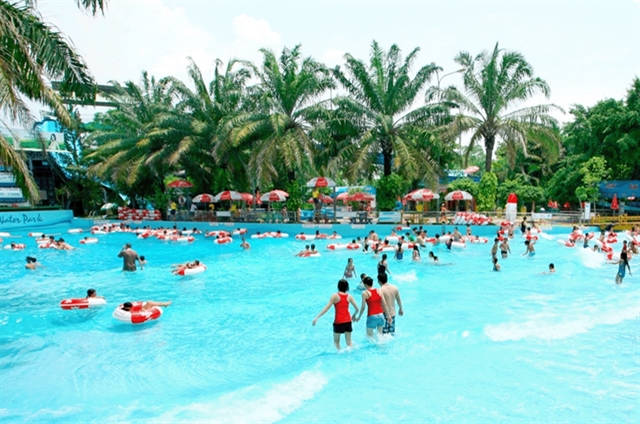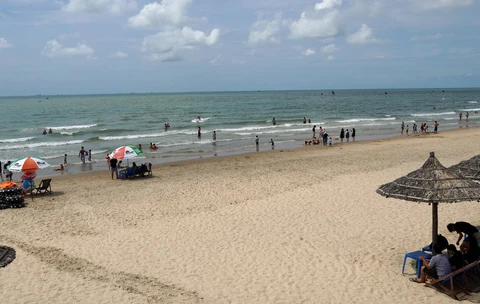Hanoi (VNS/VNA) - Summer is the peak season for tourist companies and high sales and dividend rates are expected to drive tourism shares up in the coming months.
For many Vietnamese families, the hot weather between May and August is the most attractive time to travel and relax.
Right after the end of the Lunar New Year holiday, travel companies started offering enticing promotions for summer tours. This is the time of year they record the highest revenues from sales.
Tay Ninh Cable Tour Company (TCT) earned 93.7 billion VND in pre-tax profit in the first nine months of last year, exceeding its target for the year by 23 percent. Its share price climbed more than 19 percent between May and August last year.
Dam Sen Water Park Corporation (DSN), which operates the biggest water park in HCM City, posted total revenues of 109.6 billion VND (4.7 million USD) and pre-tax profit of 108 billion VND in the first three quarters last year, equivalent to 90 percent and 93 percent respectively of its targets for the whole year.
For the whole of 2018, it earned 216.6 billion VND in revenue and 95.7 billion VND in profit after tax. With these results, the company decided to pay a dividend rate of 65 percent.
DSN shares fluctuated between May and August but remained high at around 54,000-56,000 VND (2.32-2.40 USD) per share.
Shares of Hoi An Tourist JSC (HOT), jumped more than 50 percent from early May to early June, from 31,000 VND a share to 47,750 VND on June 6, but then declined to 29,000 VND in August.
Revenues and profits of the first three quarters of last year for Hoi An Tourist accounted for about 80 percent of the whole year’s figures. By the end of September, it had earned 155 billion VND in total revenue and 17.3 billion VND in net profit.
Shares of Thanh Thanh Cong Tourist JSC (VNG) and Superdong Fast Ferry Kien Giang JSC (SKG) were also favoured by investors. Their share prices increased by between 20 and 30 percent in the peak season.
There are 19 tourist companies listed on official and unofficial stock exchanges in Vietnam. Most of their revenues are generated during the hot season and their business performance during this time has an impact on their share prices.
Tourism is one of Vietnam's key economic sectors, raking in 620 trillion VND in 2018, equivalent to 8.2 percent of the country’s gross domestic product (GDP).
It is expected to contribute 11.6 percent to the nation’s GDP and generate 1.47 quadrillion VND each year by 2025.
The number of international tourists to Vietnam has been on the rise with an average growth rate of 27 percent per year from 2015 to 2018. More than 4.56 million foreigners visited the country in the first three months of this year, representing year-on-year growth of 7 percent.
While the prospects for tourism stocks are bright in general, many of them have not received much attention from investors.
Except Thanh Thanh Cong Tourist and Superdong Fast Ferry Kien Giang, which often see millions of shares change hands per day, liquidity of tourism stocks such as Hoi An Tourist, Dam Sen Water Park and Tay Ninh Cable Tour are very low.
Market analysts have said the low liquidity can be attributed to the fact that most listed tourism companies are small- and medium-sized enterprises with volatile business performance.
Meanwhile, the biggest companies such as Saigontourist, Hanoitourist and Vietravel have not yet been listed.
Saigontourist Holding Company, a State-owned enterprise under the management of the HCM City People’s Committee, was asked to be equitised in 2018.
Under the plan, both Saigontourist and its subsidiary Saigontourist Travel Service Company would have made their initial public offerings last year, reducing the State capital level from 100 percent to 65 percent and then below 50 percent by 2020. However, they missed the deadline.
Competition in the tourism industry is getting tougher and analysts have said shares of big companies would help attract investors, raising the liquidity of the whole sector.-VNS/VNA
VNA























